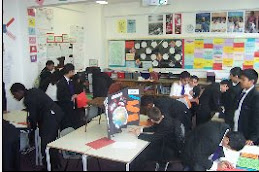Silences in the classroom are a tricky thing. You ask a question and normally there are a thousand children trying to yell their answers at you. But today, there's nothing. Blank faces stare back and you hear the clock tick for the first time. At this point the novice teacher goes into panic mode and practically gives the answer away. Yet this is precisely the wrong tack.
Sagiv (1999) found that giving people 'tools' for learning, rather than 'answers', better enabled the tool-holder to be successful in the future. This is also the case for the classroom. Recently I asked my business studies class for a definition of "gross profit". They stared blankly. I stared back. After about 30 seconds a rather creepy feeling came over the room. Students began looking at each other, then back at me, pleading for the answer. Still, I held strong and asked the fateful question, "Well, if we don't know, what do we do now?"
Still more silence; yet more staring. I reassured students that I would wait for them to figure it out, after all if they go to university unable to find out simple pieces of information I will have failed. Slowly they suggested ideas: "Should we look in a textbook?" "Be my guest", I answered. "Would it be on the internet?" one asked. "It might", I edged, cryptically.
In all, it took 15 minutes to find our answer but during that time students learned how to use glossaries, read (and not just click on) Wikipedia and searched content pages. Since then they remember what gross profit is AND -- more critically -- if there is a silence they know what to do next.
As my first teaching mentor told me: "Intelligence is knowing what to do when you don't know what to do". Sometimes, silence breeds intelligence.
3 months ago
